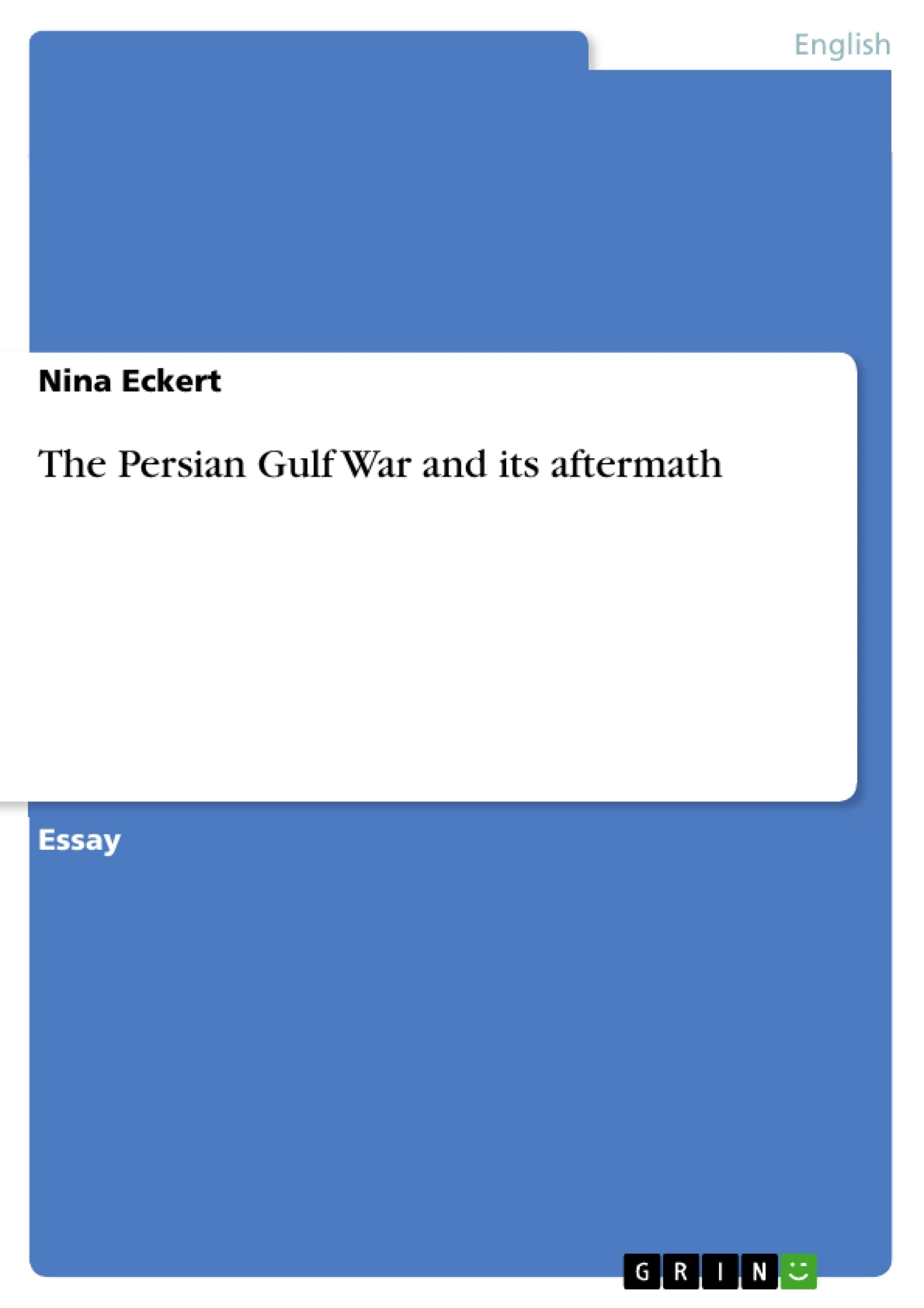With the End of the Cold War, the world should become safer. But instead of a
more peaceful decade, the years following the Fall of the Berlin Wall were
characterized by the same issues as before, like international terrorism or the
endangered environment. More dangerously, new, more alarming problems emerged,
such as nuclear capability of rogue states and exceedingly brutal local rivalries, where
the most powerful nations of the world were seemingly helpless and sometimes
experienced a nightmare, like the UN mission in Somalia. The first crisis in the Post-
Cold War Era was the Persian Gulf War, where for the first time the U.S. President
was able to act without paying too much attention to Russia. On the other side, he was
aware of the need of consultation with other states. So Bush was wise enough to avoid
the same mistakes other American presidents had done before him, e.g. Lyndon
Johnson in the Vietnam War. Attention shall be given not only to the war`s aftermath,
neccessity and success but also to its significance for U.S. foreign policy at the
beginning of the Post-Cold War Era.
[...]
Inhaltsverzeichnis (Table of Contents)
- The Persian Gulf War and its aftermath
- The Persian Gulf Crisis
- Iraq's History
- The Invasion of Kuwait
- The Formation of the Coalition
- The Gulf War
- The Air War
- The Ground War
- The Aftermath
- The Unfinished War
- The Years of Provocation
- The Oil-for-Food Programme
- The Return of the Son-in-Law and Brother
- The End of Cooperation with the UN
- Operation Desert Fox
- The Crumbling of Sanctions
Zielsetzung und Themenschwerpunkte (Objectives and Key Themes)
This text examines the Persian Gulf War and its aftermath, highlighting the significance of this conflict for U.S. foreign policy at the beginning of the Post-Cold War Era. It explores the historical context of the war, analyzing Iraq's past conflicts and the motivations behind Saddam Hussein's invasion of Kuwait. The text also delves into the international response to the crisis, outlining the formation of the coalition and the conduct of the war. Finally, it examines the long-term consequences of the war, analyzing the unresolved issues and ongoing tensions in the region.- The role of U.S. foreign policy in the Persian Gulf War
- The historical context of the Persian Gulf Crisis
- The international response to the invasion of Kuwait
- The military strategies and consequences of the Gulf War
- The lasting impact of the war on the Middle East
Zusammenfassung der Kapitel (Chapter Summaries)
The text begins by examining the historical context of the Persian Gulf Crisis, outlining Iraq's past conflicts and the motivations behind Saddam Hussein's invasion of Kuwait. It then explores the international response to the crisis, focusing on the formation of the coalition and the conduct of the war. The text details the military strategies employed by the coalition forces, from the air war to the ground war, and examines the consequences of the conflict for both Iraq and the region. Finally, the text discusses the long-term consequences of the war, analyzing the unresolved issues and ongoing tensions in the Middle East.Schlüsselwörter (Keywords)
The text focuses on the Persian Gulf War, U.S. foreign policy, Saddam Hussein, Iraq, Kuwait, the coalition, the military strategies employed during the war, and the long-term consequences of the conflict for the Middle East. Key concepts include the end of the Cold War, international terrorism, rogue states, and the role of the United Nations in international affairs.- Arbeit zitieren
- Nina Eckert (Autor:in), 2002, The Persian Gulf War and its aftermath, München, GRIN Verlag, https://www.grin.com/document/115471



